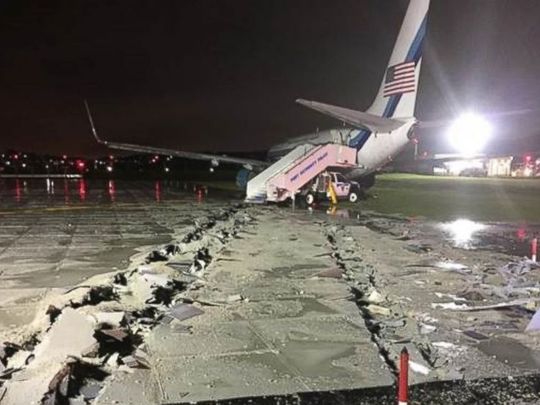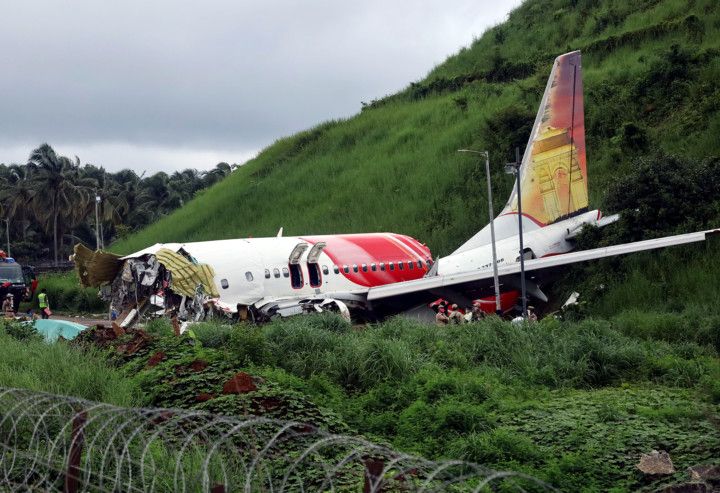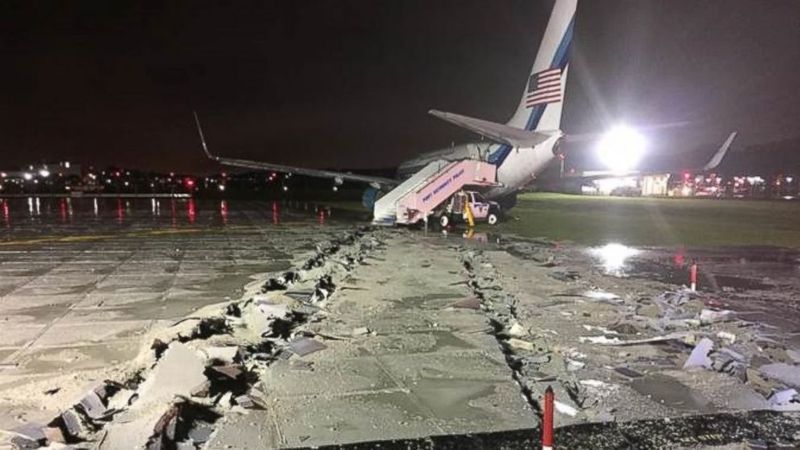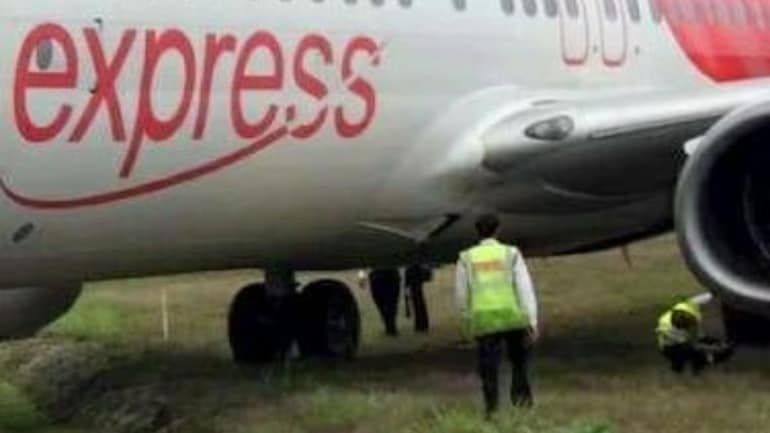
DUBAI: In recent years, aviation authorities have recommended that "table-top" airports should adopt ground arrestor at the end of the runway.
The life-saving value of such a system was highlighted following the deadly runway overshooting incident that killed at least 18 people at the Kozhikode airport in India on Friday night (August 7, 2020).
Kozhikode airport's two runways, 2,700 metres in length, sit on top of a hill in India's Kerala state.
How does a ground arrestor help during landing overruns?
Aircraft can and do overrun the ends of runways — sometimes with disastrous consequences. To minimise the hazards of overruns, the Federal Aviation Administration (FAA) requires a safety area 1,000 feet in length beyond the end of the runway.
This "safety area" is now an FAA standard. Many runways were built before its adoption. For those locations that do not have the space for a full safety area, "soft ground arrestors" provide an engineered solution to restore a margin of safety.

What is a 'soft ground'?
"Soft ground" of an "arrestor bed" means any material that will deform readily and reliably under the weight of an aircraft tyre. As the tyres crush the material, the drag forces decelerate the aircraft.
It's a form of crushable concrete used to stop aircraft that overrun a runway.
Civil aviation industry experts have developed mathematical models that aid in the design of these arrestor beds and predict aircraft stopping distances.
Full-scale aircraft testing validated the models and set the stage for installation of these arrestor beds at major airports. The US has mandated it for all airports. It has at least three airports listed as having "table-top" runways.
How do 'arrestor beds' work?
Made out of "engineered materials", an arrestor (also "arrester") bed is a surface made of special materials — a type of "soft" concrete used to stop aircraft that overrun a runway — designed to reduce the severity of the consequences of a runway overshot.
Arrestor beds had already proven their worth on a number of accassions.

Recommendations ignored?
In the past decade, experts have recommended the installation of such a safety system on India's so-called table-top runways. It's been reported that Indian authorities "ignored" at least two such recommendations, made following an investigation report into the 2010 crash of another Air India Express jet, also on another table-top runway.
What happens when a ground arrestor system is not there?
It would simply mean that a runway overshooting incident would be risky and potentially fatal, especially in wet conditions, when coupled with a tailwind.
The runway at Kozhikode, where the latest crash took place, had no adequate safety mechanism. The reason: recommendations made by civil aviation officials for a ground arrestor system was deemed too costly.
MAY 22, 2010: a Boeing 737-800 passenger jet operating Air India Express Flight 812 from Dubai to Mangalore, India, crashed on landing at the table-top Mangalore airport, after the aircraft overshot the runway, falling down a hillside and bursting into flames. Of the 160 passengers and six crew members on board, 158 were killed (all crew members and 152 passengers) and only eight survived. It was the first fatal accident involving Air India Express.
OCTOBER 28, 2016: The plane of then-vice-presidential candidate overshot the runway during heavy rain over New York's La Guardia Airport. The plane avoided a disaster overshot after it traveled through an "arrestor bed."
AUGUST 7, 2020: A Boeing 737 operating as Flight 1344 from Dubai skidded off the table-top Kozhikode runway in Kerala, India, after touching down with a tail wind. The plane broke apart. Apart from the 18 people killed, more than 100 others were injured, some critically.
Where are the table-top runaways in India?
A table-top airport simply means an aviation facility set on a hilltop, usually with limited space at the end of the runway, with one or both ends of the runway overlooking a "drop".
Airports in India considered as “tabletops” are:
- Lengpui (Mizoram)
- Shimla and Kullu (Himachal Pradesh)
- Pakyong (Sikkim)
- Mangaluru (Karnataka)
- Kozhikode (Kerala)
- Kannur (Kerala)
What did India's Civial Aviation Safety Council do about recommendation to build arrestor systems?
It's been reported that several international airlines had stopped flying bigger aircraft including Boeing 777 and Airbus SE A330 jets into the city — due to safety issues.
The Kozhikode airport opened on April 13, 1988. As early as 2011, a member of the aviation regulator's Civil Aviation Safety Advisory Council already wrote to top bureaucrats about the need for the system, Bloomberg reported.
Data from the International Civil Aviation Organisation (ICAO) data show that about half of all aviation accidents reported to ICAO were runway-safety related.
Of those runway-related accidents, 35 percent were the result of a runway excursion, which occurs when an aircraft veers off or overruns the runway.
The recommendation followed the fatal 2010 crash of an Air India Express Boeing 737, which overshot the runway at Mangalore — also a table top — and burst into flames, killing 158 people.

As recently as 2017, a SpiceJet-operated Bombardier Inc. Q-400 plane, with 75 on board, veered off the same runway and struck the lights at the edge. This incident also happened on a wet runway, according to the final incident report.
What happened to the proposal?
In 2012, airport authorities rejected proposals to implement additional safety measures, citing "high operational and maintenance cost", the Hindu newspaper reported citing the airport's director.
Is the Kozhikode aiport compliant with ICAO?
Yes. The Kozhikode airport has 240 meters of safety area on both ends, as required by International Civil Aviation Organization (ICAO) regulations, and the airport has been certified, according to an Airports Authority of India official.
All mandatory regulations on runway end safety areas were complied with after the DGCA recommendations following the Mangalore crash, the official added.
ICAO technical documents do not mention of "table-top" airports.
However, India’s Directorate General of Civil Aviation (DGCA) refers to these airports as such, and highlighted safety measures during operations.








